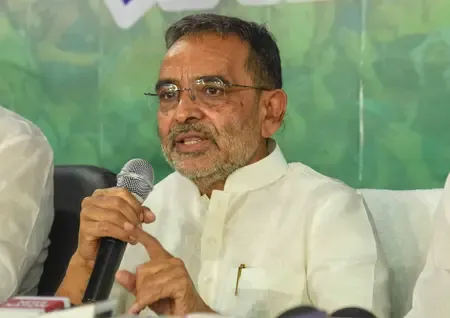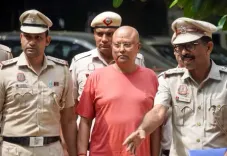How Did Narendra Modi’s 2010 'Samvidhan Gaurav Yatra' Commemorate 60 Years Since the Constitution's Adoption?

Synopsis
Key Takeaways
- Narendra Modi led the 'Samvidhan Gaurav Yatra' in 2010 to honor the 60th anniversary of the Constitution.
- The event featured a massive replica of the Constitution on a decorated elephant.
- It aimed to raise public awareness about the Constitution's values.
- Since 2015, November 26 has been celebrated as Constitution Day.
- The procession drew from historical traditions of honoring texts in India.
New Delhi, Nov 26 (NationPress) In 2010, as India celebrated the 60th anniversary of the Constitution's adoption, Narendra Modi, who was the Chief Minister of Gujarat at the time, spearheaded the 'Samvidhan Gaurav Yatra' as a homage to the Constituent Assembly. The Constitution was officially adopted on November 26, 1949, and it took effect on January 26, 1950.
During his tenure as Chief Minister, Modi orchestrated a grand procession in Surendranagar, featuring a replica of the Constitution placed atop a beautifully adorned elephant, parading through the streets.
He emphasized that this tribute was especially significant as the 60th anniversary did not receive adequate recognition from the Central government at that time.
According to the Modi Archive, "To pay tribute to the Constitution, a massive replica was mounted in a specially crafted howdah on a decorated elephant. Modi, along with state ministers, dignitaries, and approximately 15,000 attendees, honored the procession with profound reverence for the Constitution."
This procession drew inspiration from a historical custom dating back to the reign of King Siddharaj in Patan, where a Sanskrit grammar treatise by Acharya Hemachandra was similarly paraded on an elephant.
Modi's yatra sought to elevate the Constitution’s prominence in the public sphere, the Modi Archive noted.
"The Samvidhan Gaurav Yatra, akin to the Samvidhan Diwas celebrated today, transcended mere ceremonial observance; it was a rallying cry. Modi's objective was clear: to enhance awareness of the Constitution's profound importance, educate citizens on its foundational values, and reaffirm the nation’s dedication to the principles it represents," the post elaborated.
Since 2015, the Central government has officially designated November 26 as Constitution Day (Samvidhan Diwas) to foster constitutional values among the populace.
This year, the nation is celebrating the 76th anniversary of the Constitution's adoption with various events, including a mass reading of the Preamble.









